Modern Blue Pigments

The earliest blue pigments generally began with a mineral that are blue to the naked eye. But modern blue pigments like Prussian blue have sometimes been discovered by pure luck.
Prussian Blue
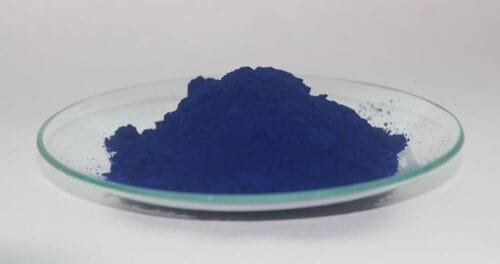
In 1709 German dye-maker Johann Jacob Diesbach was working on a red cochineal pigment. He added potash to his mixture, but the material had been contaminated by animal blood. Since blood is red, he assumed that it would create more red. However, an unexpected chemical reaction occurred creating iron ferrocyanide, which is a vibrant blue.
This happy accident resulted in Prussian blue, a pivotal shade of blue in art, the signature color of Picasso’s blue period and of Katsushika Hokusai‘s iconic work, The Great Wave off Kanagawa.
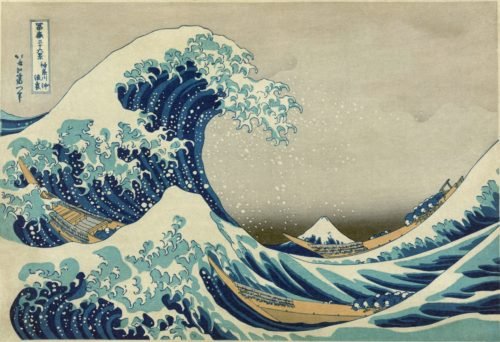
Prussian blue’s influence did not stop in the art world. The Prussian blue pigment has been influential in architecture and medicine as well. In 1842, Sir Josh Herschel, an English astronomer, discovered the pigment’s unique sensitivity to light, eventually leading to a method of image reproduction.
This process enabled architects to create multiple copies of building plans, known today as the blue print. The process was relatively simple. The original drawing was made on semi-transparent paper. Another paper was coated with ammonium ferric citrate and dried. The transparent drawing would be placed over the treated paper and exposed to sunlight, then washed with potassium ferricyanide which would create Prussian blue on those areas exposed to light. The resultant image was a perfect negative of the original. Cool huh?
Also cool, but unrelated, modern medicine still uses Prussian blue in pill form as an antidote to heavy metal poisoning.
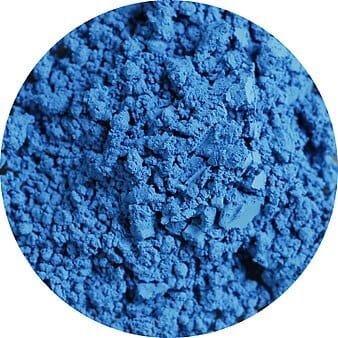
Cerulean
Made of tin compounds, of cobalt magnesium stannate, cerulean pigments were perfected in 1905 when German Andreas Höpfner roasted cobalt and tin oxides.
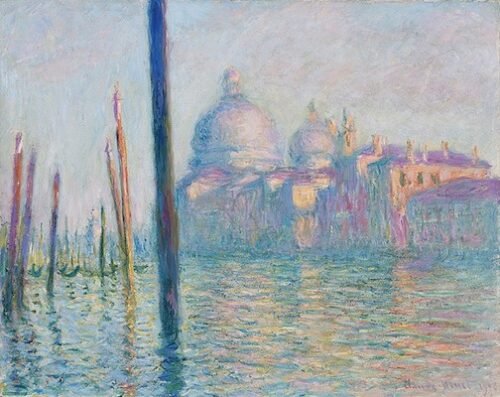
More than fifty years would pass before the pigment was marketed for artistic use, becoming very popular with Impressionist painters. In 1999, Pantone declared it the color of the millennium and the hue of the future.
Painting with multiple blues

Artists would often use different blue pigments all in the same painting. In Vincent van Gogh’s painting Starry Night, Prussian blue, Ultramarine, Cobalt and Cerulean blues all occur in the sky.
Blues of the 20th century and beyond.
Phthalocyanine Blue
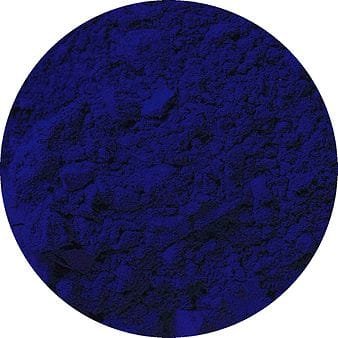
Developed around the 1930’s as a copper-based byproduct of other processes, this vivid, intense blue became the blue of plastics and other ‘modern objects.’
International Klein Blue
International Klein Blue, a matte version of ultramarine, was developed by French artist Yves Klein. He patented the method of pigment production 1960 under the name IKB.
YInMn
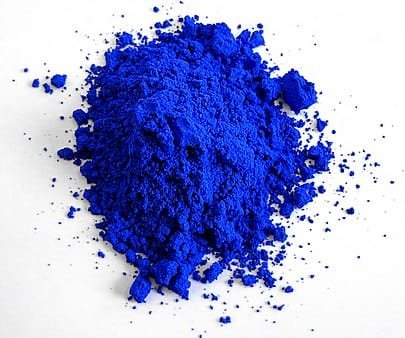
Like Prussian blue, YInMn was discovered accidentally. Professor Mas Subramanian and his graduate student Andrew E. Smith were researching materials to manufacture electrons at Oregon State University in 2009. They noticed that one of the samples turned vivid blue when heated. The name is based on the chemical make-up of the pigment: In 2016, it was released for commercial use.
These modern and ancient blue pigments generally imparted a blue color by creating a layer of color over a surface. In contrast dyes are absorbed into porous fibers. Blue dyes have been much easier to come by than blue pigments. Stay tuned for next week’s A Brief History of Blue to learn more.
References
Campbell, Robert. The London Tradesman: Being a Compendious View of All the Trades, Professions, Arts, Both Liberal and Mechanic, Now Practised in the Cities of London and Westminster. Calculated for the Information of Parents, and Instruction of Youth in Their Choice of Business. T. Gardner. London. 1747.
Gottesman, Sarah. The 6,000-Year History of Blue Pigments in Art. Artsy. November 29, 2016 Accessed April 25, 2021 https://www.artsy.net/article/artsy-editorial-a-brief-history-of-blue
Kane, Katheryn. Regency Colormen. Regency Redingote. September 30, 2011. Accessed April 23, 2021. https://regencyredingote.wordpress.com/2011/09/30/regency-colormen/
Michaeli, Dov. A Brief But Powerful History of the Colors Purple and Blue . The Doctor Weighs In. February 9, 2021. Accessed April 26, 2021 https://thedoctorweighsin.com/history-purple-blue/
Taggart, Emma. The History of the Color Blue: From Ancient Egypt to the Latest Scientific Discoveries. My Modern Met. February 12, 2018 Accessed April 21, 2021 https://mymodernmet.com/shades-of-blue-color-history/
The Color Blue: History, Science, Facts. Dunned Wards. May 12 2015. Accessed April 19, 2021 ttps://www.dunnedwards.com/colors/specs/posts/color-blue-history
The History and Meaning Behind the Color Blue in Art. Invaluable. December 7, 2018 Accessed April 15, 2021 https://www.invaluable.com/blog/blue-color/
The History Of The Colour Blue . London Fine Arts. August 28 2018. Accessed April 20, 2021 https://londonfineartstudios.com/the-history-of-the-colour-blue/

Random additional trivia:
Those who read murder mysteries, especially classic ones, may recognize that Prussian blue shares an eponym with Prussic acid, which is derived from it. Prussic acid, aka hydrogen cyanide or hydrocyanic acid is implicated in various poisoning cases.
Although the pigment Prussian blue does *contain* cyanide, the cyanide in it is not considered a health threat , because iron binds cyanide so tightly that it cannot escape to cause acute toxicity. As Maria pointed out, Prussian blue is so far from being poisonous that it is actually used to sequester thallium (arguably the worst of the heavy metal poisons) and radioactive cesium. (And if a patient has to be treated with Prussian blue over a long period, they may begin to have blue sweat!!)
That said, do keep in mind, as you use your Prussian blue, that if you convert it to Prussic acid, it can kill you. (Cue mystery novel character saying they detected a scent of bitter almonds.) 😉
Thanks Rachel! These are delightful Random Bits!